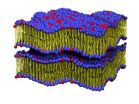Thyroid cancer rates in Pennsylvania rising faster than rest of country
2014-09-10
(Press-News.org) Incidence of thyroid cancer is rising faster in Pennsylvania than in the rest of the United States, according to Penn State College of Medicine researchers.
"Since the mid-1970s, the incidence of thyroid cancer in the United States has more than tripled," said Dr. David Goldenberg, professor of surgery and medicine. "Thyroid cancer is now the seventh leading type of cancer in the nation. It typically occurs in young women and is projected to become the third most common cancer in women by 2019."
Papillary thyroid cancer, responsible for most of this increase, is very treatable and has a 95 percent 30-year survival rate. There are no symptoms in all but the latest stages and the cancer is typically discovered incidentally during a physical exam or on an imaging study.
The researchers compared the state's thyroid cancer rates with the nation's by using two databases -- Pennsylvania Cancer Registry (PCR), a database started in 1985, and Surveillance Epidemiology and End Results (SEER) 9, a database started in 1973 and representative of the general population in the U.S. The researchers identified a total of 110,615 cases in SEER 9 and 29,030 in PCR.
In Pennsylvania, white women had a 25.5 percent rise in thyroid cancer, followed by black women at 17.7 percent; white men at 8 percent; and black men at 3.8 percent. The fastest rate of increase over time occurred in black women. The researchers published the results of this study in JAMA Otolaryngology.
Papillary thyroid cancer had the largest increase in cancer type -- an 8.8 percent yearly change -- followed by anaplastic thyroid cancer at 4.2 percent and follicular thyroid cancer at 1.4 percent. Tumors confined to the thyroid at diagnosis increased 8.5 percent per year, while those that spread regionally outside the tumor increased by 7 percent. The two trends were not parallel, indicating that the greatest increase has been among tumors localized to the thyroid at diagnosis.
The researchers looked to see if increased detection of small "clinically insignificant" thyroid cancers is skewing the reported Pennsylvania rates. Alternatively, they looked for a true increase in the incidence of the cancer. The researchers concluded that in addition to over-diagnosis, there also appears to be a real rise in the rate of thyroid cancer in the commonwealth. They found that the rate of diagnosed tumors that spread regionally or distantly in the body increased significantly along with those diagnosed localized to the thyroid. Also, the proportion of larger tumors increased in addition to smaller clinically insignificant ones.
"This indicates that an actual increase in disease has contributed to the rising incidence of thyroid cancer," Goldenberg said. "It's due to higher incidence of thyroid cancer, and not only to increased detection."
Because the gender and racial distribution of thyroid cancer in Pennsylvania is similar to national trends, the originating factors may be applicable on a national scale. Risk factors for thyroid cancer include exposure to radiation, being a female, Asian race, genetic susceptibility and iodine deficiency or excess.
"The Three Mile Island nuclear accident in central Pennsylvania released significant amounts of radioactivity," Goldenberg said. However several studies indicate that the TMI accident is not likely to be responsible for large increases, in the prevalence of thyroid cancer in Pennsylvania."
Obesity and diet are also potential risk factors. According to the Centers for Disease Control and Prevention, in 2010 Pennsylvania was the state with the 13th highest prevalence of obesity.
"If obesity is a major risk factor for thyroid cancer, the high rate of obesity in Pennsylvania may partially explain the increased incidence compared to the national data," Goldenberg said.INFORMATION:
Other researchers are Darrin Bann, M.D./Ph.D. program; Neerav Goyal, resident; Fabina Camacho, senior instructor, public health sciences; and Malika Atmakuri, medical student, all at Penn State.
National Cancer Institute at the National Institutes of Health funded this research.
ELSE PRESS RELEASES FROM THIS DATE:
An appetite for life
2014-09-10
A simple question about appetite can provide insights into old people's general health that may help reduce their risk of dying.
In a study published in the journal Appetite, Emeritus Professor Mark Wahlqvist from Monash University's Department of Epidemiology and Preventive Medicine and the Monash Asia Institute, led a team investigating the connection between appetite and mortality.
"Appetite is generally regarded as one of the most important indicators of health," Professor Wahlqvist said.
The urge to eat is often reduced in the elderly, with many afflicted by ...
Researchers unlock the genetic code of cancer-causing liver fluke parasite
2014-09-10
Singapore—An international team of scientists from Singapore, Thailand, China and Australia has cracked the genetic code of the liver fluke parasite, Opisthorchis viverrini, using a unique DNA analysis technique developed at A*STAR's Genome Institute of Singapore (GIS).
GIS's DNA analysis technique has allowed the researchers to further study the biology of Opisthorchis viverrini to understand the cause and the eventual development of treatments for bile duct cancer, a condition caused by the parasite. The breakthrough was published in the scientific journal Nature Communications.
Opisthorchis ...
Back pain killing your sex life?
2014-09-10
VIDEO:
Contrary to popular belief, spooning is not always the best sex position for those with a bad back, according to research from the University of Waterloo. For the first time...
Click here for more information.
Contrary to popular belief, spooning is not always the best sex position for those with a bad back, according to new research from the University of Waterloo.
For the first time ever, scientists have successfully documented the way the spine moves during sex ...
US cityscapes show consistent patterns of 'urban evolution'
2014-09-10
Most people think of city landscapes as simpler, diminished versions of the wild forests and free-flowing streams found in remote places. But in a series of studies published Sept. 10, 2014 in a special issue of the journal Biogeochemistry, scientists specializing in urban ecosystems say just the opposite is true. Urban landscapes are more complex than they seem, and from coast to coast these ecosystems can work in surprisingly similar ways, regardless of local conditions. And they have the potential to change quickly – for better or worse – depending on how people manage ...
Study shows that in baboons, as well as humans, social relationships matter
2014-09-10
Elizabeth Archie, Clare Booth Luce Assistant Professor in the Department of Biological Sciences at Notre Dame and colleagues used an incredibly rich data set on the social relationships of wild baboons which was collected on an almost daily basis, year-round, since 1984 by the Amboseli Baboon Research Project. The project, which Archie helps direct, is a long-term study of wild baboons that follows the lives of individual baboons, watching what they do and who they interact with.
"We can tell individual baboons apart by distinct features of their appearance, such as their ...
Teens' neural response to food commercials predicts future weight gain
2014-09-10
Children and adolescents see thousands of food commercials each year and most of them advertise junk foods high in sugar, fat and salt. Yet, we know almost nothing about how all of this food marketing impacts the brain, especially for teens. New research suggests that food commercials "get under the skin" of teens by activating reward regions when they are viewing ads for milk shakes, or burgers, or colas. The bad news for us is that this can result in weight gain and obesity.
In the first prospective longitudinal study to investigate neural response to unhealthy food ...
New research finds that smartphone apps are a useful tool for diet monitoring
2014-09-10
TEMPE, Ariz. (Sept. 10, 2014) - The ability and consistency in monitoring one's diet, but not dietary quality, improves with the use of smartphone applications, according to new research by Arizona State University health scientists published in the latest issue of the Journal of Nutrition Education and Behavior.
Researchers Christopher Wharton, Carol Johnston, Barbara Cunningham and Danielle Sterner at ASU's School of Nutrition and Health Promotion authored the study.
The study compared the effectiveness of a popular smartphone application called "Lose It" for dietary ...
Working during depression can offer health benefits to employees
2014-09-10
The collaborative study between the University Of Melbourne and the Menzies Research Institute at the University of Tasmania is the first to estimate the long-term costs and health outcomes of depression-related absence as compared to individuals who continue to work among employees with depression in Australia.
Lead researcher Dr Fiona Cocker from the Melbourne School of Population and Global Health said a greater understanding of the costs and consequences of both absenteeism and presenteeism would allow for more informed recommendations to be made to the benefit of ...
Researchers watch lipid molecules in motion
2014-09-10
Researchers from Göttingen in collaboration with colleagues from Augsburg have 'filmed' the movement of lipid molecules using an X-ray stroboscope at DESY. In the scientific journal Physical Review Letters, researchers lead by Professor Tim Salditt of the University of Göttingen report that their study offers new insights into the dynamics of biomolecules, which compose materials such as cell membranes. The cell membranes consist of a double layer of lipid molecules; the properties of the membranes are of great interest because they control which substances enter and exit ...
Pain tolerance levels between men and women are similar
2014-09-10
Resilience, a person's ability to overcome adverse circumstances, is the main quality associated with pain tolerance among patients and their adjustment to chronic pain. This is the result of a new study carried out at the University of Málaga that shows that the effect of gender on this ability is not as significant as originally thought.
Over the years a number of clinical trials have shown important gender differences with regard to susceptibility to pain through illness, effectiveness of medications and recovery after anaesthetic. Furthermore, these results coincide ...





